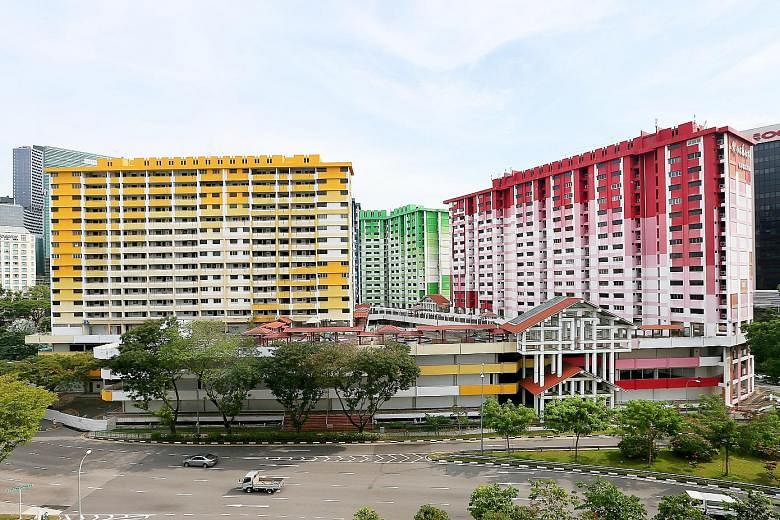Demolition works for the iconic multicoloured blocks of Rochor Centre will begin early next year, with hoardings and noise barriers put up to reduce disamenities to the public, said the Land Transport Authority (LTA).
The former residential and retail complex sits on a 13,749 sq m site that is earmarked for the upcoming North-South Corridor. The new expressway, which connects towns in the northern region to the city centre, is slated for completion in 2026.
LTA awarded a $1.81 million public tender to contractor Aik Sun Demolition and Engineering last month to carry out demolition and reinstatement works for Rochor Centre.
When asked how the demolition of Rochor Centre would be carried out, LTA said the method used will comply with the code of practice for demolition, which recommends good practice methods for the safe demolition of buildings and structures and takes into account environmental issues.
Demolition specialists said a development the size of Rochor Centre could take between three and six months to be torn down.
Said Mr Tay Hing Heng, a demolition specialist at contractor Rock Busters: "Generally, the conventional method for demolishing buildings here involves using excavators, concrete breakers and crushers to hack away from the top floor to the bottom.
"It can take around half a year for something the size of Rochor Centre, if the contractor carries out the works concurrently at all four blocks."
Impact on surrounding properties
Ms Jestilia Toh of Beng Siew Construction, which specialises in demolition works, said the contractor would have to submit demolition plans to the Building and Construction Authority. All internal furnishings, cabling and plumbing will be stripped from the building for recycling purposes, she added.
Nonetheless, said Mr Tay, there will inevitably be negative effects on surrounding properties, such as dust and noise.
He added: "Rochor Centre is right next to several buildings and the area around it has high human traffic. Dust and noise can be controlled through measures such as using water sprinklers and barriers, but they can only do so much."
About 100m from the complex, the proprietor of Indonesian food stall Impian Wahyu in Jalan Besar, who is known as Abang Batman, 60, said the road diversions and hoarding from previous nearby developments, such as Rochor MRT station on the Downtown Line, nearly halved the number of customers at his eatery.
He said: "Business has been good now that the hoarding has been removed, and hopefully (the upcoming demolition of) Rochor Centre will not affect us as much because it does not block traffic."
Meanwhile, former residents at the blocks, most of whom have been relocated to new HDB flats at Kallang Trivista, said they would remember their former home fondly.
Some, like Ms Angie Ng, 30, a public relations officer who lived in Rochor Centre for 25 years, said they would go to see it for the last time before it disappears.
Said housewife Gie Koh: "It's definitely a pity that such a colourful building that has livened up Bugis will become history soon. Though the building may not stay, I'm sure memories of Rochor Centre will last a lifetime."


